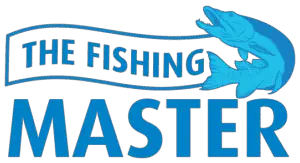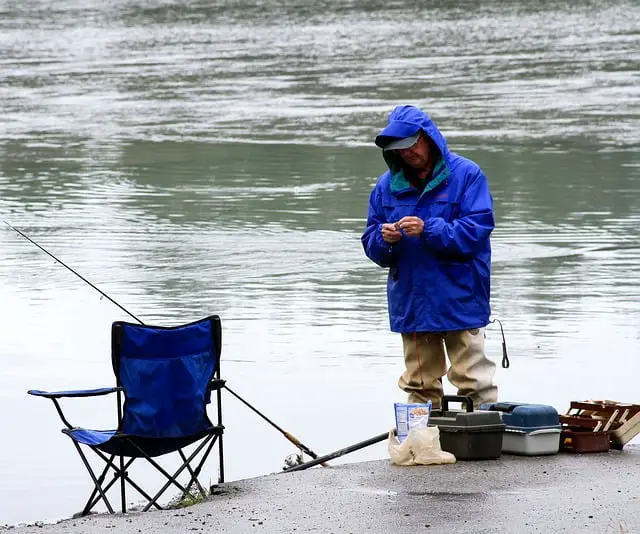Table of Contents
Every angler wants to have the essential fishing tools at their right hand, but they do not want to go overboard or spend money on things they will never use.
*This post may contain affiliate links. As an Amazon Associate we earn from qualifying purchases.
What do you need to have all the bases covered? Your rod and reel may require a meaningful investment, but a $3 pack of bobbers could be crucial to enjoying your day at the lake.
Let’s consider what fishing tools you really need.
1
Fishing Rod
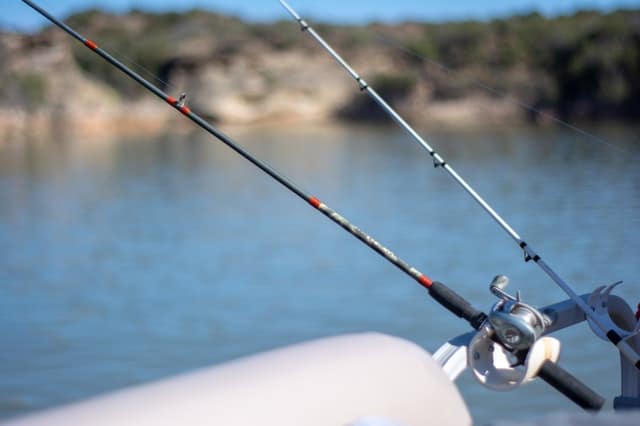
Image Source: Pexels.com
Most anglers today use spinning rods, especially those newer to the sport. Others use spinning rods, but they are a more specialized product.
A good, all-around fishing rod for weekend anglers is a 6’6” or 7′ medium casting rod. Almost all common lures work well on these rods.
How Much?
Most anglers today use spinning rods, especially those newer to the sport. Others use spinning rods, but they are a more specialized product.
A good, all-around fishing rod for weekend anglers is a 6’6” or 7′ medium casting rod. Almost all common lures work well on these rods.
Graphite or Fiberglass?
They usually make rods of either graphite or fiberglass. Graphite rods are lighter and less flexible. They have a more sensitive feel for bites, but they also break easier than fiberglass rods.
The fiberglass rods are more flexible and durable, however, they are less sensitive. They also make some rods from combinations of both materials.
Good Action?
A rod’s action is measured by where it bends when catching a fish. Rods with fast action bend closer to the tip of the pole, but slow action rods bend closer to the reel.
Fast action rods are more durable than their counterpart and able to handle bigger fish. Slow action rods, including ultralight setups, have more feel and thrill during the catch.
Handles
The base of the rod has a handle. They typically make these of either cork or foam, and they come in varying lengths.
Your choice of handles is largely a matter of preference. Be sure you like the feel and comfort of a handle before you spend money on a fishing rod.
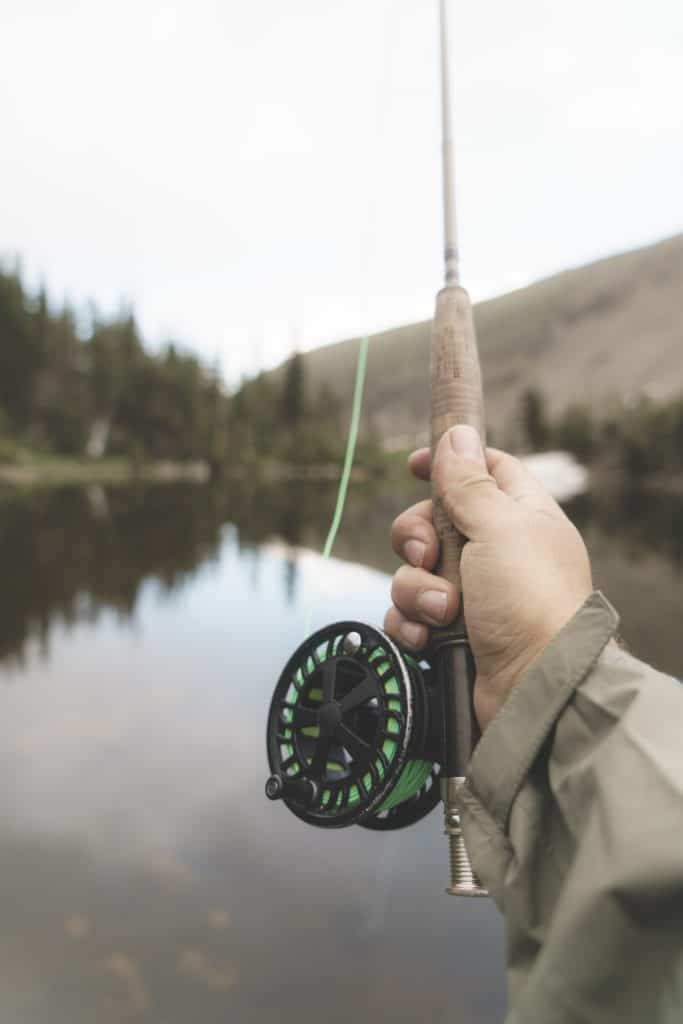
Image Source: Unsplash.com
2
The Reel
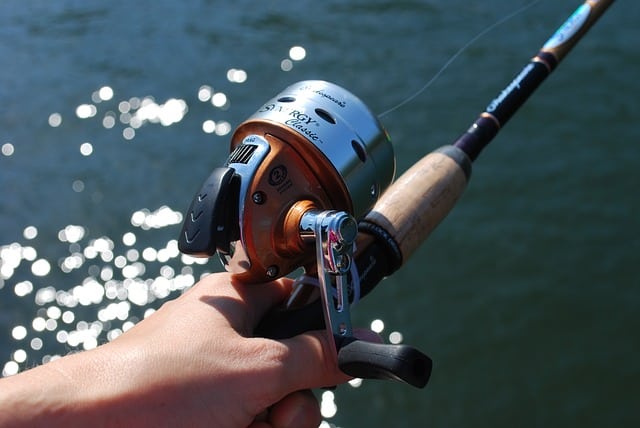
A typical reel is essentially a spool on an axis. They can be closed-face or open-face.Closed-face reels have the spool enclosed within the reel. The angler operates the spool by using a button when casting.
Open-face reels have an exposed spool. Rather than using a button, the angler controls casting with a combination of a bar and his own finger. Both have pros and cons as open-face reels are generally considered harder to master. Closed-face reels are more difficult to fix after a tangled spool
Gears
Reels will either have a single gear or a combination of gears. The gear ratio of a particular reel may be low, meaning it is easy to reel but requires a lot more cranks to retrieve the line. Other reels have higher ratios that are harder to crank but retrieve the line more quickly.
Moving Parts
Moving parts on a reel require either bearings or bushings. Bushings are common on cheaper reels and are less durable. Better reals use bearings and have better durability and feel.
Investment?
Reels are another fishing tool that can get expensive. The cost of reels ranges from as little as $10 at department stores to $500 or more. Specialty reels, such as electric reels, can easily be priced in the thousands.
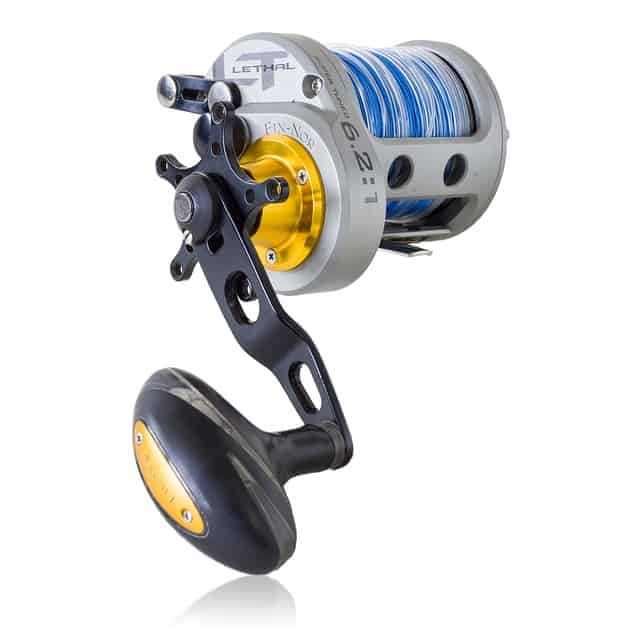
Image Source: Pixabay.com
3
Fishing Line
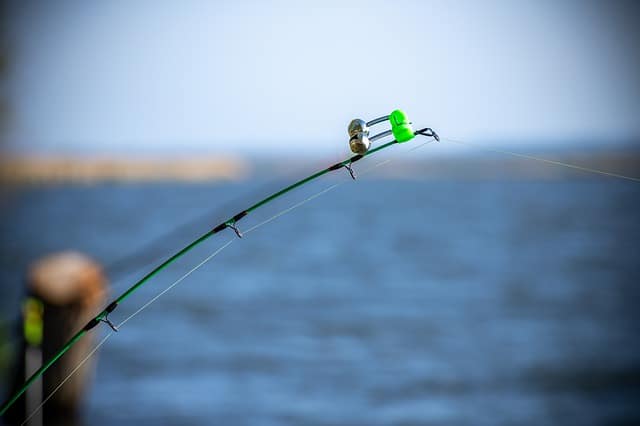
Image Source: Pixabay.com
When shopping for your fishing line, be sure you understand your choices of type and test.
Type
There are three primary types of fishing line: monofilament, fluorocarbon, and braided.
Monofilament line is standard among many anglers, but it lacks the durability of other options. Fishing in deep cover or near structure can quickly wear out monofilament lines. Fluorocarbon line is substantially more resistant to abrasions.
Monofilament also stretches more than its counterparts. When line stretches too much, it can be more difficult to aggressively set the hook. Fluorocarbon line has virtually no stretch.
Similarly, braided line is durable and has little stretch, however it is a visible line. Monofilament is invisible and perfect for clear waters.
The benefits of monofilament line is its price. It has been used for many years and it is still the cheapest option in most cases.
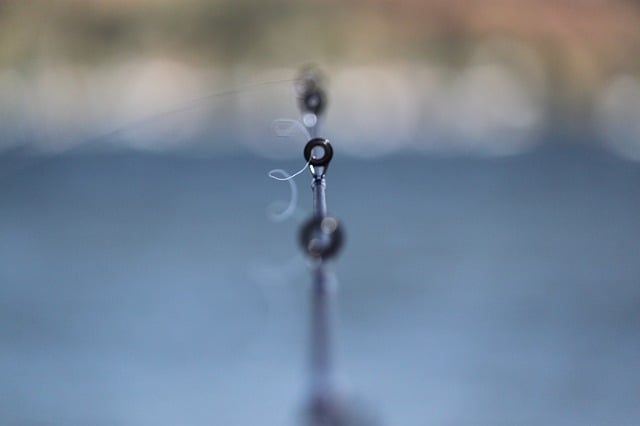
Image Source: Pixabay.com
Test
Fishing line test measures the strength of your fishing line in pounds. The required pounds of pressure to break the line is its test.
Twelve pounds of pressure will theoretically break a 12-pound-test fishing line. Remember, there is a difference between a two-pound fish and two pounds of of pressure. A two-pound bass will jump and fight, supplying much over two pounds of pressure.
A typical weekend fisherman is well served by 6-10 pound test line.
4
Hooks
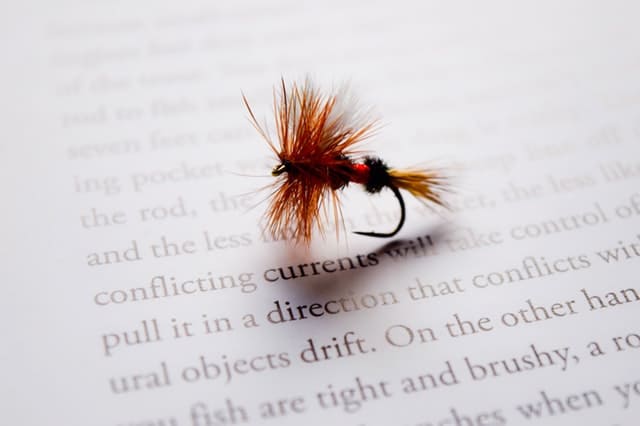
Image Source: Pexels.com
When the fish you want so badly finally strikes, the proper hook can be the difference between letting the big one get away or having trout for dinner. Hooks are fishing tools that can easily be taken for granted.
Sizes
Hooks can be measured by their standard sizes. Hook sizes run from 1 (largest) to 32 (smallest).
Other hooks are measured by the “aught” system. Unlike the basic size system, the aught system runs from 1 to 20, and the bigger number is given to the bigger hook.
Aught measurements include a slash. The largest aught measurement is 20/0 and the smallest aught measurement is 1/0.
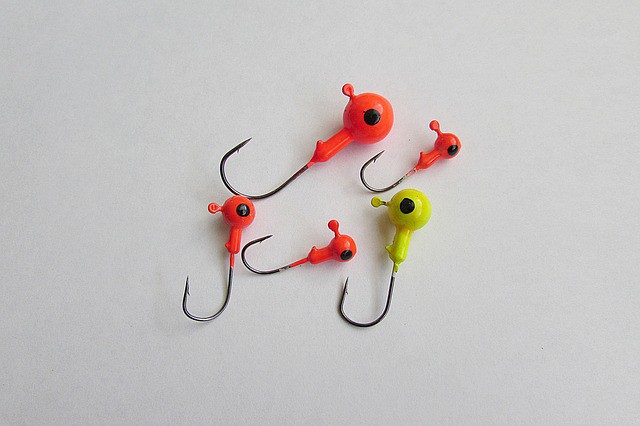
Image Source: Pixabay.com
Hook sizes also include thickness and are typically noted as fine, heavy, extra heavy, etc.
Types
J-hooks are probably the most common hook. They are shaped like a J and may or may not be barbed. Barbed hooks have a small, sharp point facing the opposite direction of the primary point
When a fish is hooked with a barbed hook, the hook cannot easily slip out of the fish’s lip. You lose fewer fish with a barbed hook, but you can also do more damage to the fish. If you are a catch-and-release angler, your fish will have a higher mortality rate with barbed hooks.
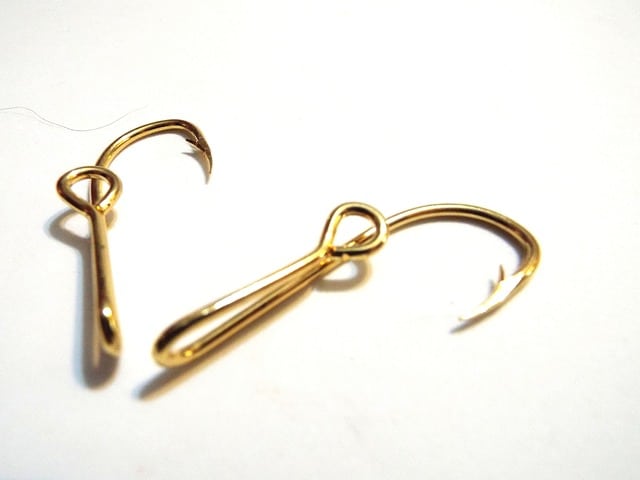
Image Source: Pixabay.com
Circle hooks begin like a J-hook, but they continue to make a circular shape resulting in something similar to a lower-case D. Circle hooks require less “setting” of the hook.K-hooks split the difference between the J-hook and the circle hook. Anglers often use them with live minnows for bass fishing.
5
Bait
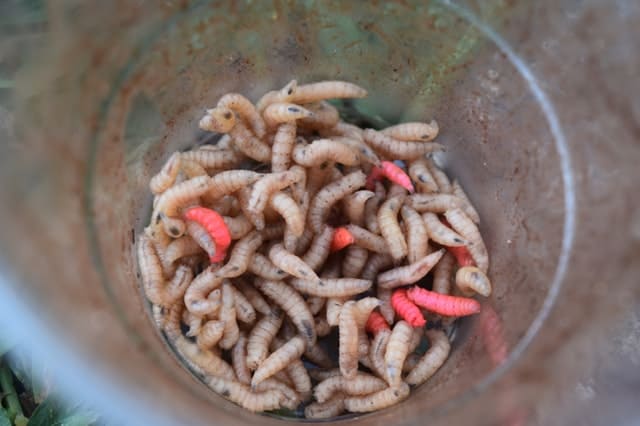
Image Source: Pexels.com
Speaking of bait, many recreational anglers love bait fishing.
Live Bait
Worms are a universal fishing bait used from toddlers to senior citizens. Worms are free when you collect them on your own and are easily available in any bait store for a reasonable price.
You can use smaller worms for trout or sunfish, while larger worms like night crawlers are good for catching bass or walleye.
Walleye also enjoy leeches. Leeches are not as readily available as worms, but they are a useful live bait.
Minnows are small fish that can be hooked and allowed to swim under a bobber or given leeway to swim above a sinker. They are good for large game fish and catfish but you need to have a minnow bucket or similar piece of equipment to fish with minnows.
Other Bait
Corn and cheese are useful trout bait. Dough balls have long been used for carp and catfish.
Many companies now manufacture bait that can be rolled into a ball and put on the hook. They are marketed for specific species of fish.
6
Lures
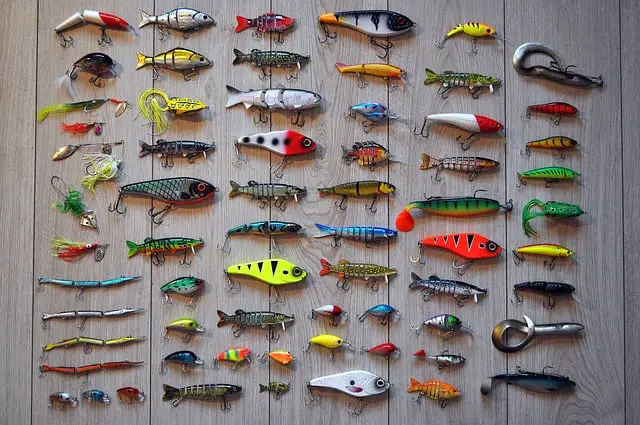
Image Source: Pixabay.com
If you prefer lures over other bait, there are countless options. Some basics versions of this fishing tool include:
- Spoons are a simple lure that waddles in the water. Spoons have been around for generations.
- Jigs are lures that are fished up and down as opposed to a simple out-and-back retrieval.
- Crankbaits travel through the water with the characteristics of a live fish.
- Spinners revolve to attract fish’s attention as they move in the water.
- Top-water lures, such poppers, create an action on the top of the water to attract strikes from underneath.
- Soft lures are common imitation baits, such as rubber worms.
7
Bobbers
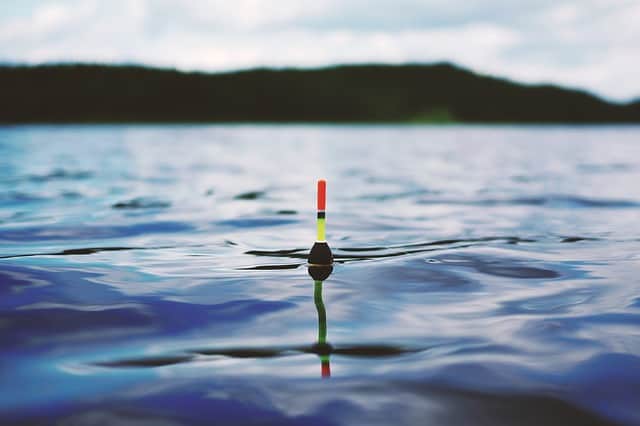
Image Source: Pixabay.com
If you are relying on a worm or leech, you will need to have bobbers in your tackle box. This universal fishing tool comes in a lot of shapes and sizes, but most common mistake with bobbers is to use a bobber that is too big.
Worms and bobbers are great ways to get started on your fishing journey, and they are good for children too. If you use a small hook, you only probably only need a small piece of worm to cover the end of the hook. Add a small bobber for fun catching sunfish.
Options
The most common bobber is the bubble type, a hollow plastic ball. Variations are also available in foam or rubber. They are the cheapest bobber.
Stick bobbers are a tapered stick-shaped float that attaches to your fishing line at both ends. The Avon floater is similar but has a rounded body at the end of the stick.

Image Source: Unsplash.com
Dink bobbers are cylindrical pieces of cork, while popping can be added to a lure or bait and make a “clicking” sound during retrieval. The click, or pop, imitates the sound of bait fish or other water animal.
8
Sinkers
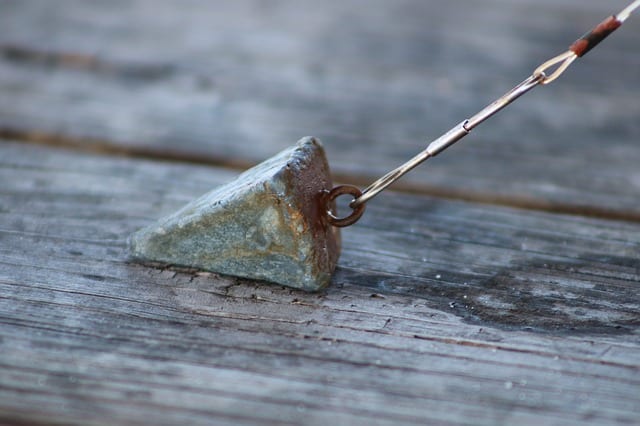
Image Source: Pixabay.com
Sinkers are weights added to your fishing line. You can use them with live bait or lures. Not every weight should sink your bait to the bottom of the water. Often adding weight is a strategic maneuver.
Split Shots
Split shots are probably the most common sinker. They are often no bigger than a small pebble and max out near the size of a small marble.Split shots have a groove in the middle that clamps onto your line and is squeezed tightly with needle-nose pliers.
Usually, small notches on the opposite side of the groove allow your pliers to grip enough to re-open the split shot and remove it from your line. Split shots can be used above a hook with live bait keep your worm or other bait from coming to the surface in a current.
Rubber Grip Sinkers
Rubber grip sinkers are larger than split shots and more elongated. Their shape is also useful for resisting snags.
The sinkers have a groove in the center like a split shot, but the groove is filled with rubber. By stretching the rubber, your line can be wrapped around the rubber core and secured.
Egg Sinkers
The egg sinker is a common catfish sinker. It is useful with fish that feed on the bottom of the lake or river, including carp.
The line is threaded through the middle of the sinker allowing it to move freely through the sinker. This is useful with live bait, such as minnows.
The minnow has freedom to swim, and you can determine the amount of leeway with a split shot added to the strategic points where the line should no longer flow freely through the sinker.
9
Swivels
A fishing swivel is a small tool with rings on each side of a freely turning joint. A swivel allows the line to turn freely without enduring unnecessary tangles.
Think of an old-fashioned phone cord that would wind and twist after several phone calls.
Your fishing line may do something similar, so swivels can be useful fishing tools in that situation.
Swivel-Snaps
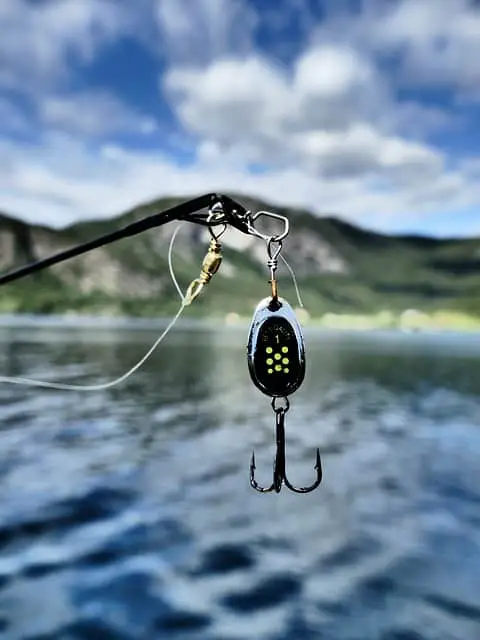
Image Source: Pixabay.com
Some swivels come with a snap on the end of one ring. This can allow you to change rigs on the bait-end of the swivel without continually cutting and re-tying the line.
10
Pliers
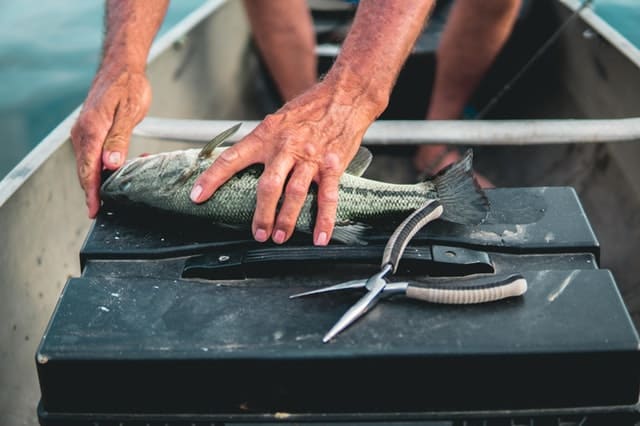
Image Source: Pexels.com
Every fisherman needs pliers in his tackle box. The split shot was one example.
Needle-nose pliers are the best choice, because along with squeezing split shots, you can also use these fishing tools to retrieve hooks when fish swallow the hook in places hard for your fingers to reach. Other times, you hook fish through the hard upper-jaw bone and pliers are helpful to get the hook out.
Don’t forget the small cutting mechanism at the base of many needle-nose pliers. A quick cut the pliers can be useful without always having to reach for your knife.
11
Knife
Even with pliers, you will still need a good knife. Often you need to cut your line or trim the excess after tying a good fishing knot.
Depending on how rustic you are, you may even need to shape kindling to cook your fish on an open flame, not to mention gutting and cleaning your catch.
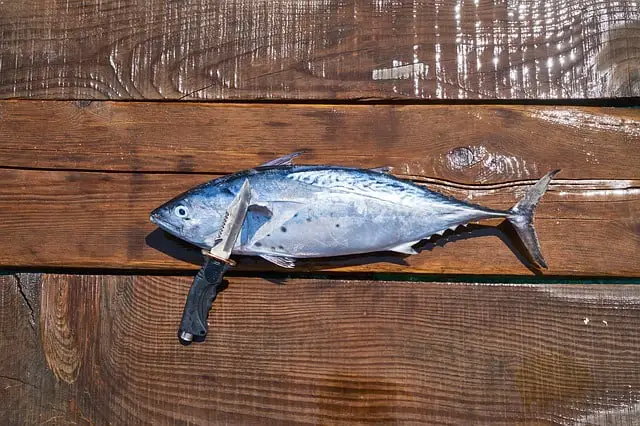
Image Source: Pixabay.com
12
Tackle box
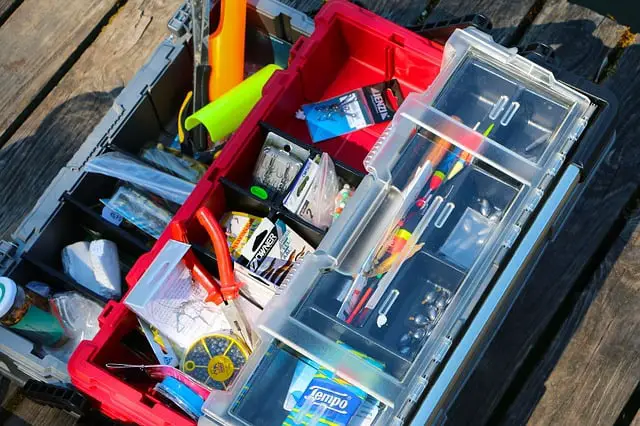
Image Source: Pixabay.com
As you accumulate the necessary fishing tools, you will need a place to put them. You will need a way to get them from your car to the lakeshore. Of course, you will need a tackle box.
Your tackle box may be hard or soft, and it needs to have enough room for your fishing tools and reasonable room for your hobby to grow.
Hard Boxes
Hard tackle boxes are time tested. From metal to the current plastic products, They have more durability than soft boxes, and their tray system is more protective of your lures.
Soft Boxes
Soft tackle boxes are lighter and can often be carried backpack style or with a strap.They are easy to store and better for carrying extras, such as a can of soda and a sandwich.
13
Waders
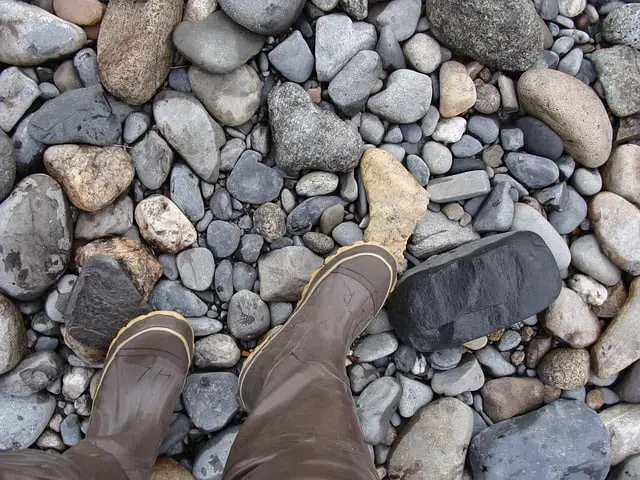
Image Source: Pixabay.com
Waders are waterproof boots that reach anywhere from your knees all the way to a full overall garment.
Waders allow you to wade in the water while fishing, and if you are a shore angler, they can be useful to help reach the best fishing holes.
14
First Aid kit
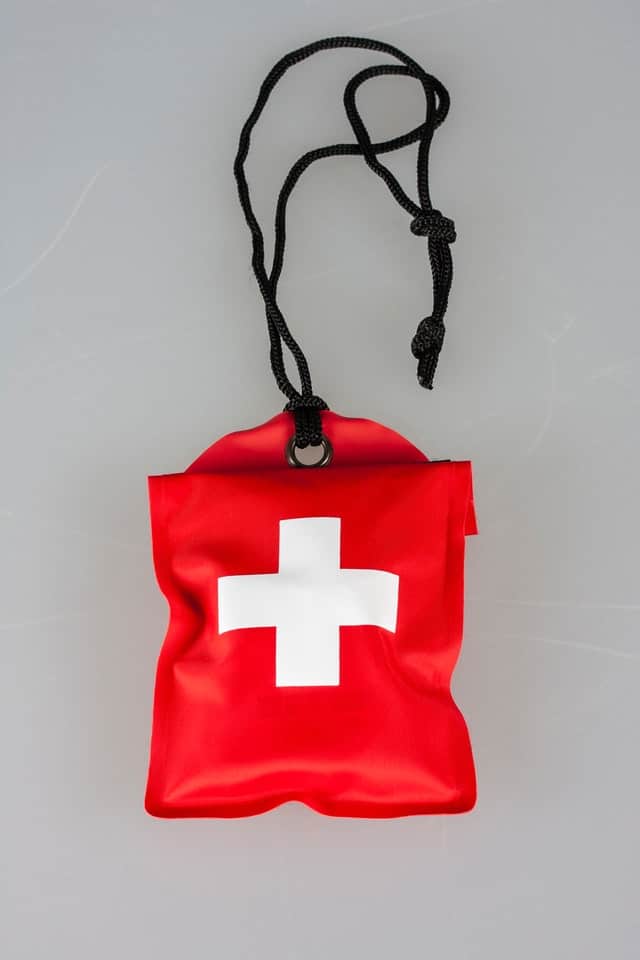
Image Source: Pexels.com
From wandering too far in your waders to sticking yourself with a hook, fishing brings plenty of opportunities for injuries.
You can purchase first aid kits in prepackaged containers made especially for outdoorsmen.
15
A Safe Place for Your Phone
In the day and age we live, you probably need access to your cell phone. You do not want it falling into the lake or getting covered with fish slime.
Consider a waterproof phone bag or else visit your particular supplier’s store for options unique to your own phone.
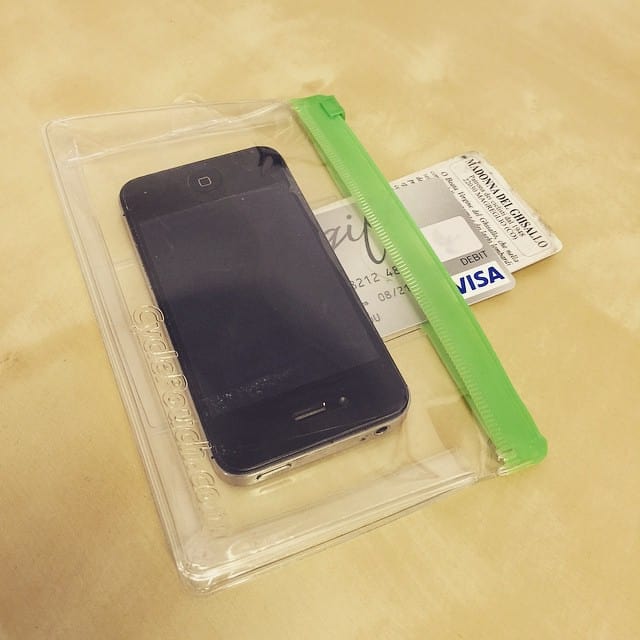
Image: CC BY 2.0, Glory Cycles, via Flickr
Best Fishing Tools
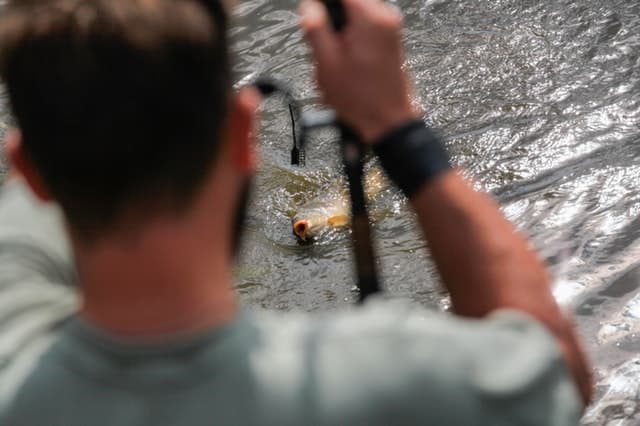
Image Source: Pexels.com
Fishing is meant to be fun, but it can ruin a day on the water if you do not have the equipment you need. Nearly every angler needs the fishing tools listed above. Without any of them, you will eventually be in a scenario that limits your ability to fish to the fullest.
How often you fish will affect the way you want to invest your resources. For some, a $25 rod from the big box store will be sufficient. For others, a $125 rod will be a wise purchase.
Be sure you put yourself in a position to enjoy fishing to the fullest and have what you need to do so.
Featured Image Source: Pixabay.com
